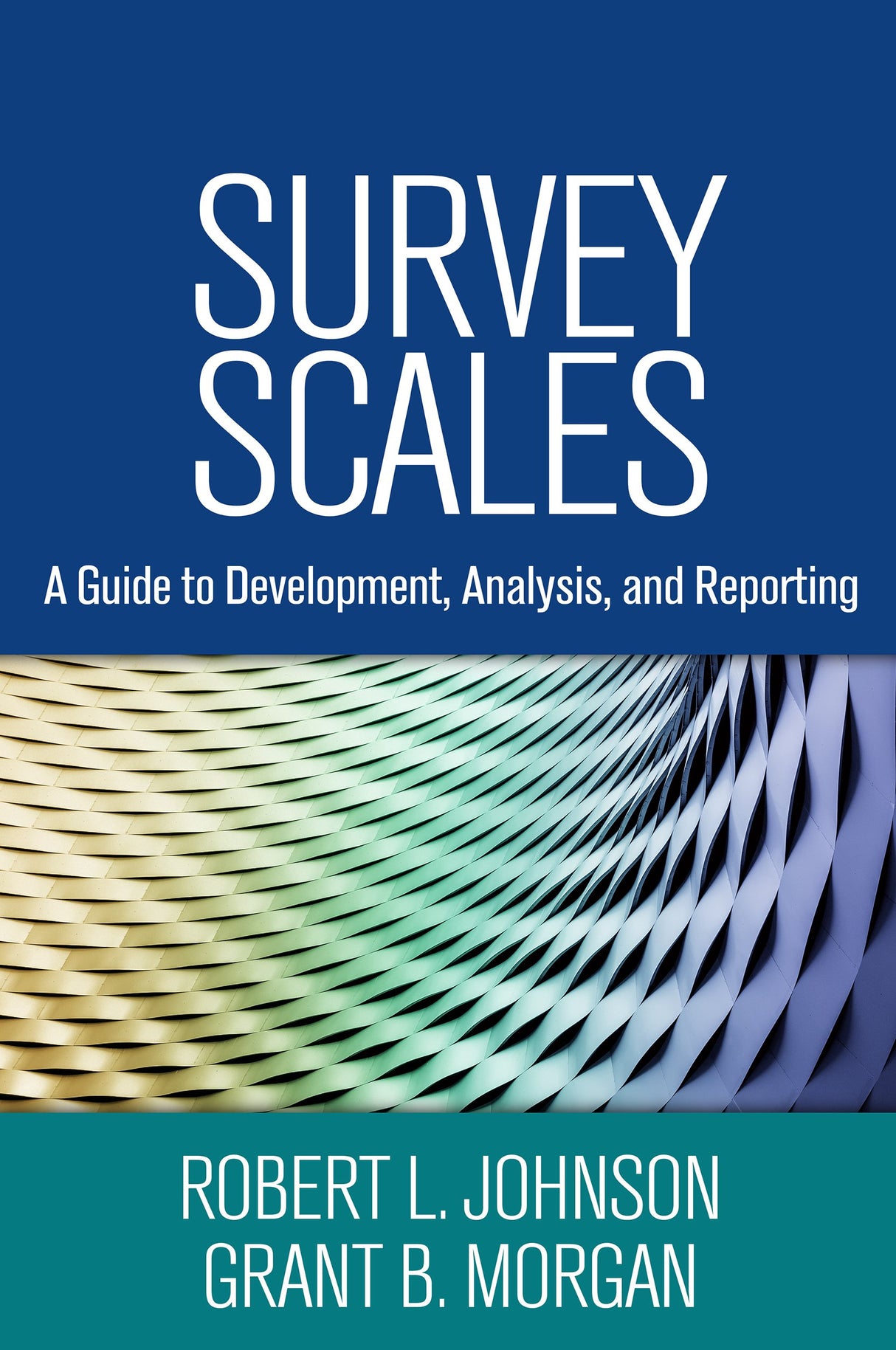Survey Scales: A Guide to Development, Analysis, and Reporting
Survey Scales: A Guide to Development, Analysis, and Reporting is backordered and will ship as soon as it is back in stock.
Couldn't load pickup availability
Genuine Products Guarantee
Genuine Products Guarantee
We guarantee 100% genuine products, and if proven otherwise, we will compensate you with 10 times the product's cost.
Delivery and Shipping
Delivery and Shipping
Products are generally ready for dispatch within 1 day and typically reach you in 3 to 5 days.
Book Details
-
Author: Robert L. Johnson
-
Publisher: GUILFORD PRESS
-
Language: English
-
Edition: 1st Edition
-
ISBN: 9781462526963
-
Pages: 269
-
Cover: Paperback
-
Dimensions: 9.3 x 6.1 x 0.6 inches
-
Format: Import
About The Book
Robert L. Johnson's [Book Title] is a comprehensive guide to developing closed-response survey scales that accurately measure attitudes, beliefs, behaviors, and other key constructs. Published in 2016, this first edition synthesizes the literature from the survey and measurement fields, providing applied researchers and graduate students with essential tools and guidelines for creating and evaluating survey instruments.
The 269-page book covers all stages of scale development, from reviewing existing scales for potential adoption to constructing new scales based on a conceptual framework. It offers practical advice on writing a variety of survey items, including checklists, true-false variations, and Likert-style questions. Key sections guide readers on how to design response scales, conduct factor analyses, and assess the validity and reliability of their instruments. The book also emphasizes the importance of presenting survey results using tables and graphs.
With user-friendly features such as end-of-chapter exercises with sample solutions, "Not This/But This" examples of strong and weak survey items, and a glossary of key concepts, this book is designed to help readers gain a solid understanding of survey development. Additionally, an appendix with examples of parametric and nonparametric procedures for group comparisons is included for further study.
Ideal for researchers and graduate students in the fields of social sciences, education, and psychology, [Book Title] offers a practical, step-by-step approach to survey scale development that is both informative and easy to follow.





